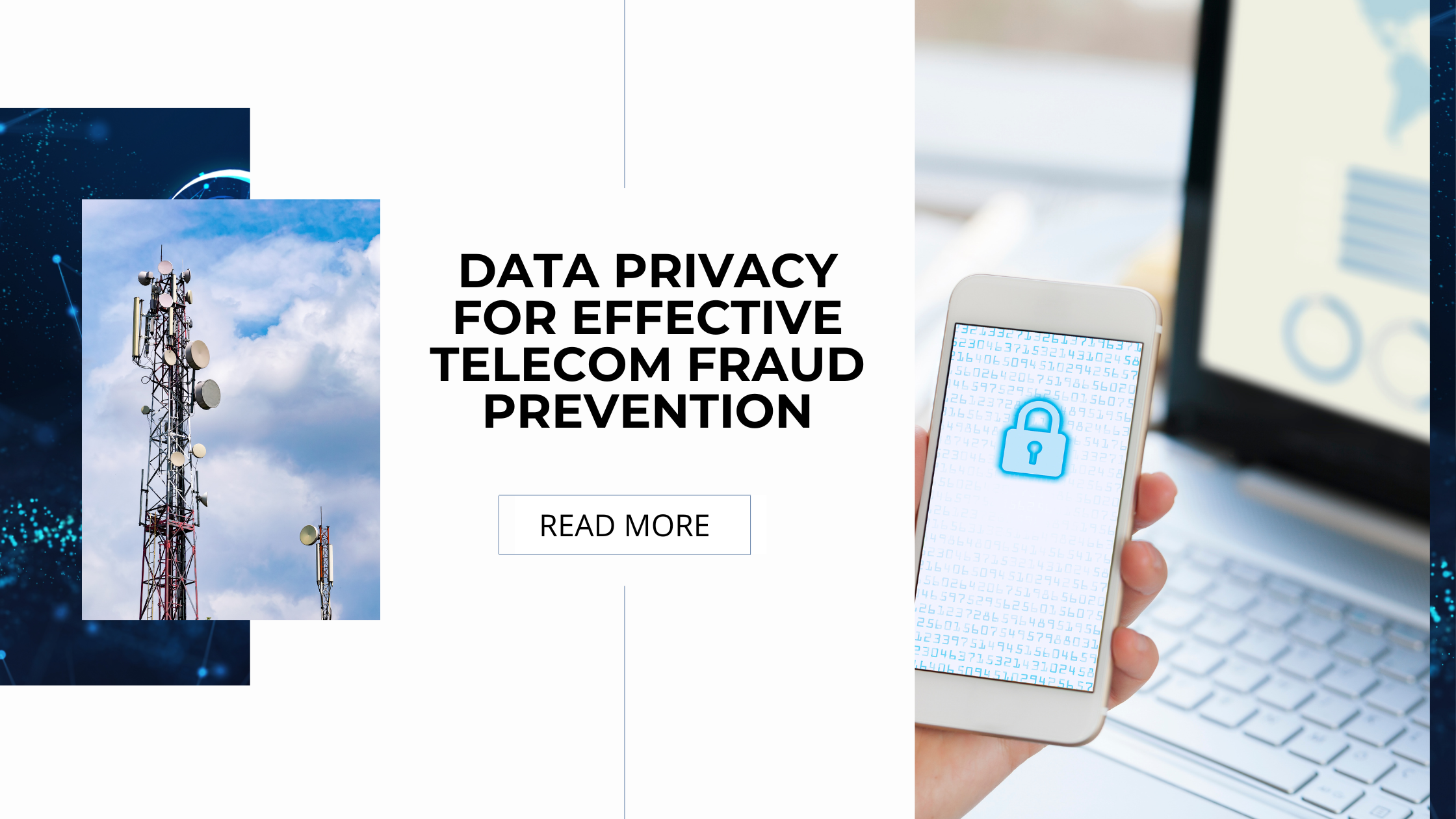An ever-increasing reliance on data has fuelled the meteoric rise of the telecom industry. Customer information, network usage patterns, and billing details all contribute to a vast digital landscape that telcos utilise to personalise services, optimise operations, and – crucially – prevent fraud. However, this data-driven approach presents a delicate balancing act: safeguarding customer privacy while harnessing the power of data analytics to identify and combat fraudulent activity. This blog post explores this complex intersection between data privacy and data-driven insights in the context of telecom fraud prevention. It discusses the challenges faced by telcos, looks into regulatory frameworks governing data usage, and proposes strategies to navigate this realm effectively.
The Challenge: Balancing Security with Privacy
Telecom companies collect a wide range of personal data from their subscribers. This data includes names, addresses, phone numbers, internet usage patterns, location information, and, in some cases, even financial details [1]. Leveraging this data holds immense potential for fraud prevention. Advanced analytics can reveal unusual activity patterns, identify suspicious login attempts, and even predict potential fraud attempts before they occur. However, concerns around data privacy add a layer of complexity to this endeavour.
Read more blogs on this topic: https://www.tauspace.com/navigating-uncertainty-an-integrated-risk-management-framework-for-telcos/
The Regulatory Landscape: Navigating Data Privacy Laws
Data privacy regulations such as the General Data Protection Regulation (GDPR) in Europe, the California Consumer Privacy Act (CCPA) in the United States, and the Protection of Personal Information Act (POPIA) in South Africa place stringent restrictions on how businesses can collect, store, and utilise customer data. These regulations empower individuals with control over their personal information, granting them the right to access, rectify, and even erase their data. This presents a significant hurdle for telcos aiming to utilise customer data for fraud prevention, raising questions about the legality and ethical implications of such practices.
Finding the Optimal Balance: Strategies for Telcos
Despite the challenges, telcos can achieve a balance between data-driven fraud prevention and data privacy by implementing a multi-layered approach:
1. Transparency and Consent-Based Data Collection
Transparency forms the bedrock of any data-driven initiative. Telcos must be clear and upfront about the types of data they collect, how it is used, and who has access to it. Customers should be provided with clear and concise privacy policies outlining their rights and opt-in/opt-out options for data utilisation in fraud prevention strategies.
2. Data Minimisation and Anonymisation
The principle of data minimisation requires telcos to restrict the collection of customer data to what is strictly necessary for fraud prevention purposes. Anonymisation techniques can be employed to protect individual privacy further. Data can be masked or aggregated in a way that retains its analytical value for fraud detection but removes any personally identifiable information.
3. Purpose Limitation and Data Retention
Customer data collected for fraud prevention should only be utilised for that specific purpose. This aligns with the concept of purpose limitation in data privacy regulations. Additionally, telcos should establish clear data retention policies, ensuring that customer data is not stored indefinitely. Once it is no longer required for fraud prevention efforts, it should be securely deleted or anonymised.
4. Security Measures and Data Breach Prevention
Robust security measures are essential for protecting customer data from unauthorised access, theft, or misuse. Telcos must invest in state-of-the-art cybersecurity solutions and implement rigorous data governance practices to minimise the risk of data breaches.
5. User Education and Awareness Initiatives
Educating customers about data privacy and how their information is used for fraud prevention is crucial. Telcos can leverage email campaigns, website notifications, and customer service interactions to empower subscribers with the knowledge to make informed decisions about their data.
Leveraging Technology: Tools for Responsible Data-Driven Fraud Prevention
Technological advancements are paving the way for new approaches to data-driven fraud prevention that prioritise privacy. Here are a few key examples:
- Federated Learning: This technique allows multiple parties to train machine learning models on their own decentralised datasets without sharing the raw data itself. This enables collaborative fraud detection while protecting individual customer privacy.
- Homomorphic Encryption: This advanced encryption technique allows computations to be performed on encrypted data, essentially decrypting the data only after the analysis is complete. This will enable telcos to analyse customer information for fraud patterns without ever needing to decrypt it.
- Differential Privacy: This method adds statistical noise to data sets, further obscuring individual details while preserving the overall integrity of the data for fraud-related analytics.
The Road Ahead: Collaboration and Continuous Improvement
The battle against telecom fraud requires ongoing innovation and collaboration between telcos, regulators, and technology developers. As regulatory frameworks evolve and technological solutions advance, telcos must adapt their strategies to ensure the continued effectiveness of their fraud prevention efforts while maintaining the highest standards of data privacy.
Conclusion
The ability to harness the power of data analytics for fraud prevention while respecting customer privacy presents a significant challenge for the telecom industry. However, by prioritising transparency, implementing robust data governance practices, and embracing privacy-enhancing technologies, telcos can navigate this complex landscape effectively. Ultimately, striking the right balance between security and privacy is not just an obligation; it’s a crucial component of building trust, fostering customer loyalty, and ensuring a sustainable future of secure communication for all.
[1] https://datadome.co/learning-center/gdpr-fraud-prevention/









